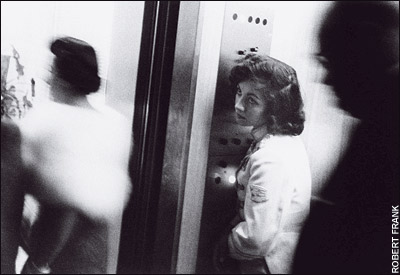On 19 December 1955 Lieutenant R.E. Brown of the Arkansas State Police noted down the reasons for his arrest of “a subject later identified as Robert Frank of New York City”. “I noticed that he was shabbily dressed, needed a shave and a haircut, also a bath. Subject talked with a foreign accent. I looked into the car where I noticed it was heavily loaded with suitcases, trunks, and a number of cameras.” Lieutenant Brown described Frank as “smart-alecky”, and although he could find no reason for detaining him, believed that his case merited further investigation: “We are continually being advised to watch out for any persons illegally in this country possibly in the employ of some unfriendly power and the possibility of Communist affiliations.”
Robert Frank was in fact a sort of spy, but not the kind Lieutenant Brown imagined. He was a Jewish émigré from Zurich, travelling around the United States, his adopted homeland, taking pictures of whatever drew his attention. He was working on a lengthy photographic project, funded by the John Simon Guggenheim Memorial Foundation, at the end of which he hoped to have produced a kind of composite portrait of “the American nation”. In his application for financial assistance, he had written: “What I have in mind, then, is the observation and record of what one naturalised American finds to see in the United States that signifies the kind of civilisation born here and spreading elsewhere… I speak of the things that are there, anywhere and everywhere – easily found, not easily selected and interpreted. A small catalogue comes to the mind’s eye: a town at night, a parking lot, a supermarket, a highway, the man who owns three cars and the man who owns none, the farmer and his children, a new house and...

Robert Frank at Tate Modern 2004
31-10-2004

